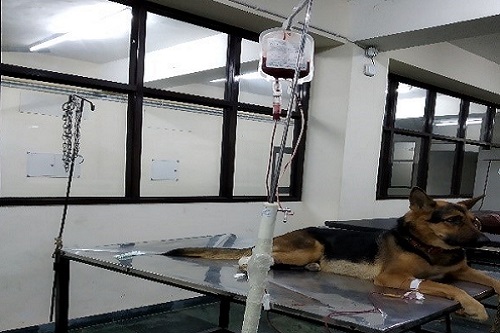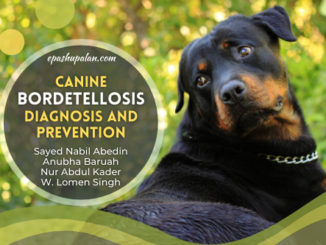Today we live in an era of advanced medicine. So, by chance and if we hear this word “BLOOD NEEDED or DONOR NEEDED ” what is the first thought that comes to the average mind is a human needs blood and let us forward some message a life will be saved we will contribute to our society. ALAS! If the same message comes my dog needs immediate blood many of us giggle around and think
DO DOGS REALLY NEED BLOOD?
CAN I GIVE BLOOD TO MY DOG?
DO DOGS HAVE BLOOD GROUPS TOO?
CAN ANY DOG DONATE?
Until they think we lose a life that patiently waited and a hopeless loving, caring owner just watches this scene and his heart is broken. He hasn’t just lost a dog but his family who was there when everyone was busy, a faithful friend who gave unlimited hugs, a warm friend who smelled his presence. A friend of enlightenment, a welcoming friend, an angel of trust and chuckles even a friend he scolded even in his despairs and failures.

Well, it might be funny for some people weird for someone and critics might think who saves a dog. But dogs with hemolytic anemia, hemoprotozoal disease, cancer patient, trauma patient, liver diseases, coagulation deficit patients, kidney failure, geriatric dogs, etc. need blood too. Once in a week almost one patient is presented with Hb less than 5 gm/dL and PCV >15% and is at the verge of dying and this condition is broadly called as anemia. Till the message is forwarded by a humane NGO the dog collapses at the right moment waiting for just a bag of blood that can easily be donated by a healthy, vaccinated, dewormed donor with a cool temperament.
Q1. So, how are Donors selected?
Blood donors should be healthy. The PCV and Hemoglobin concentration should be more than 40 % 13mg/dLin dog. A typical age recommendation is 1-8 years. Blood donors should be young adult, lean, and good tempered animals, and weigh at least 23 kg for dogs (to donate 450ml); have no history of prior transfusion; have been regularly vaccinated and are healthy as determined by history, physical examination, and laboratory tests (complete blood cell count, chemistry screen, and fecal parasite examination every 6-12 months) at an average clinics.
Q2. How many times a dog can donate?
A dog can donate after every two –three month gap without any side effect on his body.
Q3. Do I need to give special food to my dog after donation?
Blood normally starts to increase after 3 week interval after donation. No special foods need to be given but, Regular donors should receive a well-balanced and high performance diets.
Q4. Do Dogs have blood groups?
Yes, definitely blood they are not based on ABO system but they are based on DEA system “Dog erythrocyte antigen” and there are 7 antigens described.
Q5. Is blood matched?
Before any collection of blood from donor matching blood of and recipient are matched just in little time.
Q6. Can any dog donate?
Yes, but with a consent of his owner and if his health permits.
Q7. How much can a dog donate?
A dog a weight of 23.6 kg can safely donate a standard unit of 450 mL.
Q8. What are the best breeds for donation?
Breeds with thick skin (Rottweilers) or skin folds on the neck (Bassett Hounds, Mastiffs) make blood collection more difficult than long-necked dogs (Greyhounds).
Q9. How is blood collected?
A dog is put under lateral recumbency and a small area near neck is prepared and blood is collected aseptically by gravity from the jugular vein over 5-10 minute period.
Q10. Can blood be stored too?
Whole blood is stored at normal temperature (1-6°C) can be stored for maximum of 42 days depending up anticoagulant used.
Q.11 Do dogs have blood banks too?
Yes, blood banks for dogs operate in every country. Currently India has two blood banks for canines
Q 12. Like in humans some patients donate plasma platelets is it same for dogs too?
A blood can separate a bag into its components and these components include Packed RBC’s, Platelet rich plasma, platelet poor plasma however, these facilities are available only at licensed blood banks
Q 13. What is post donation care?
As simple as this a digital pressure is applied until hemostasis is achieved for at least 5 minutes. and donor is allowed to walk around is monitored for any hypotension or hypovolemia.
Q 14. What to give immediately after donation?
The donor should be provided with water and small amounts of bland food or treats immediately after donation accompanied by verbal praise and gentle petting.
Q 15. Any side effects?
Not at all less severe complications may include hematoma formation, brusing and dermatitis or pyoderma at the side
Blood donation process is entirely safe it can save a life of other FLUFFY FRIENDS and Let your pet donate and be a HERO
|
The content of the articles are accurate and true to the best of the author’s knowledge. It is not meant to substitute for diagnosis, prognosis, treatment, prescription, or formal and individualized advice from a veterinary medical professional. Animals exhibiting signs and symptoms of distress should be seen by a veterinarian immediately. |






Be the first to comment